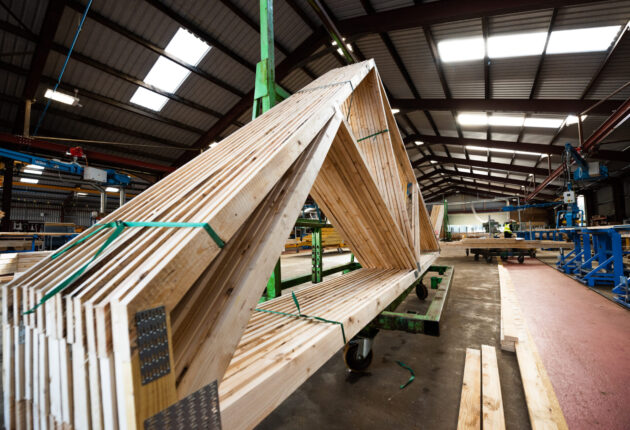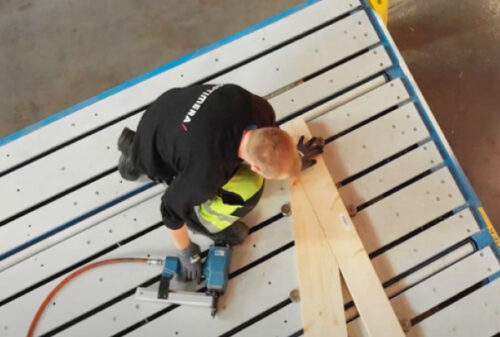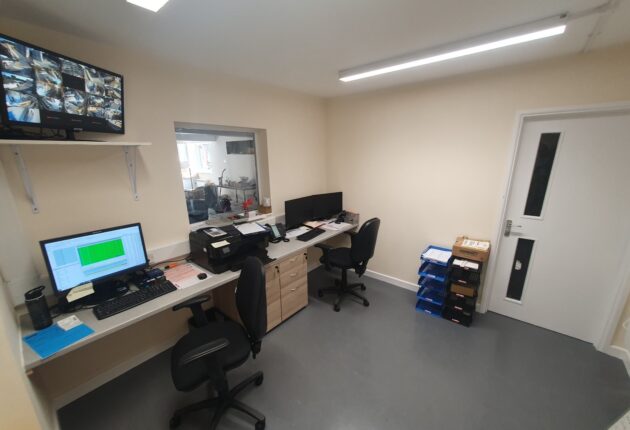Why Are We Accelerating Our Drive Towards Net Zero Carbon Emissions?
To mark World Environment Day on June 5 – a United Nations (UN) awareness programme, which this year calls for urgent action to revive our damaged ecosystems – Philip Pointon, Sustainability Director – Saint-Gobain Off-Site Solutions, highlights how using sustainable building materials, such as timber, and new methods of construction can contribute to carbon neutrality.

In 2019, we committed to significantly cut our carbon emissions to reach net zero by 2050. Just two years on we have set an even more ambitious goal on our journey to climate neutrality: to reach net zero by 2045.
This commitment is rooted in a long history of reducing our environmental impact and is inseparable from our ambition to provide customers with solutions that help them to reduce their own carbon footprint. Our net zero carbon ambition is also a steadfast manifestation of our purpose – ‘making the world a better home’.
How is the construction industry contributing to climate change?
In the fight against climate change, the construction industry is often viewed as a big part of the problem – and it’s not hard to see why.
- Buildings and their construction together account for around 39% of global carbon dioxide (CO2) emissions[1].
- Almost half of all industrial sector emissions come from the manufacturing of three materials – concrete, steel, and aluminium[2].
- Cement manufacturing alone accounts for seven percent of global CO2 emissions, yet global cement production has soared by 300 percent since 1990[3].
What are we doing to reduce our carbon footprint?
We have set out to become part of the solution: working towards increasingly ambitious sustainability targets and placing the reduction of our carbon footprint at the very heart of our business, we are already committed to reducing our CO2 emissions by 20 percent between 2010 and 2025.
Various programs and tools have been implemented to support this target including efforts to drive business decisions towards low-carbon solutions, monitoring our carbon emissions and targeting year-on-year reductions, and becoming official partners of the ChangeNOW Summit to address urgent global issues.
As a leading manufacturer of roof trusses and engineered timber solutions, we also recognise how changing the materials we use in construction is key to reducing our carbon footprint, as well as the importance of modern methods of construction (MMC), in particular off-site manufacture, in meeting the ambitious sustainable construction agenda.
Besides efforts to become carbon neutral in our own operations, we are improving the sustainability of our supply chain by making it easier for contractors, developers, and manufacturers to contribute to their carbon-efficiency goals by specifying carbon-neutral timber from sustainable sources, which helps safeguard the world’s valuable timber stocks.
The timber and timber products we use in our truss, I-beam and Posi-joist manufacture, for example, is either PEFC or FSC® certified timber chain of custody. This means it comes from independently verified legal and supporting sustainable forestry.
Tackling climate change with timber
Creating new buildings or retrofitting existing structures with low-carbon, renewable building materials such as timber is key to reducing carbon emissions in the built environment. For every cubic metre of timber used in UK construction, one tonne of CO2 is absorbed and stored, and by choosing to build with sustainable timber, businesses are helping to protect and grow the world’s forests and help combat climate change.
Timber structural systems, such as timber frame or cross-laminated timber, not only embody carbon (at around 20 – 60% per building[4]) they deliver the benefits of MMC. Choosing build systems like this reduces build time, reduces waste, and improves safety. Timber is also truly green from start to finish – acting as a carbon store for as long as a building remains standing and fully biodegradable at the end of its lifecycle.
It’s therefore easy to see why the importance of engineered timbers as a construction material and build technique has become more prominent as sustainability has gained importance. When responsibly sourced, timber has a vital role to play as a sustainable building material, and we are working hard to promote its use as a viable structural alternative to steel, concrete, or other building elements, or assembled solutions.
By continually striving to improve our environmental performance, whether it be by adhering to strict sourcing policies or finding smarter ways to build, using new or existing products in innovative ways to help solve tomorrow’s construction challenges today, as a business we have a significant role to play if net zero carbon is to be achieved. Bring on 2045!
Footnotes: 1. World Green Building Council, 2. International Timber, 3. BBC, 4. Climate Change Committee




